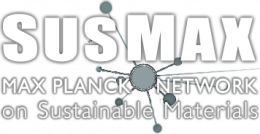A tandem project of Dr. Shahrouz Amini (MPl of Colloids and Interfaces) and Dr. Tim Maximilian Schwarz (MPl for Sustainable Materials).
About
Ceramics are integral to modern life due to their strength, durability, and biocompatibility, with applications in medicine, electronics, optics, and machinery. Yet, their energy-intensive production and waste management pose major challenges. Drawing inspiration from echinoderm growth, our team will explore novel concepts for ceramic architectures that can expand and remodel, paving the way for sustainable, next-generation devices with broad applications in engineering and design.
Persons
- Dr. Shahrouz Amini (Group Leader @ MPI of Colloids and Interfaces, Department of Biomaterials)
- Dr. Tim M. Schwarz (Group Leader @ MPI for Sustainable Materials, Department of Microstructure Physics and Alloy Design)
Project summary
Ceramics are vital to daily life due to their strength, hardness, and biocompatibility, with uses in biomedical devices, electronics, optics, and machinery. However, their production is energy-intensive, and managing ceramic waste and sourcing new raw materials poses significant challenges for the industry. Nature efficiently recycles and remodels bioceramic skeletons through continuous growth, unlike the costly tissue-shedding methods of crustaceans. Echinoderms, for example, grow their tessellated skeletons by adding material at interfaces, allowing body expansion without compromising mechanical integrity. Remarkably, this strategy enables shape-morphing and allows a several-fold increase in body size. How does interfacial material growth preserve ceramic integrity? How are the materials development logistics at the interfaces? How can growth strategies be translated into ceramic fabrication principles for a new class of sustainable engineering ceramics that are scalable? This project aims to i) uncover interfacial growth strategies and structural organization, ii) establish design principles for scalable, sustainable ceramics, and iii) develop first-in-kind growing 3D ceramic surfaces. Our work will provide a foundational step toward a new class of ceramic architectures capable of expansion and remodeling. We highlight the potential of ceramic remodeling for the fabrication of sustainable ceramic materials and devices and introduce approaches that can reduce fabrication energy consumption and minimize ceramic waste.

Sea urchin tests exhibit sustainable, expanding ceramic structures. Although the test tiles are crucial for distributing stress, their growth depends on complex interfaces that necessitate formation gaps—posing a challenge to maintaining structural rigidity.
